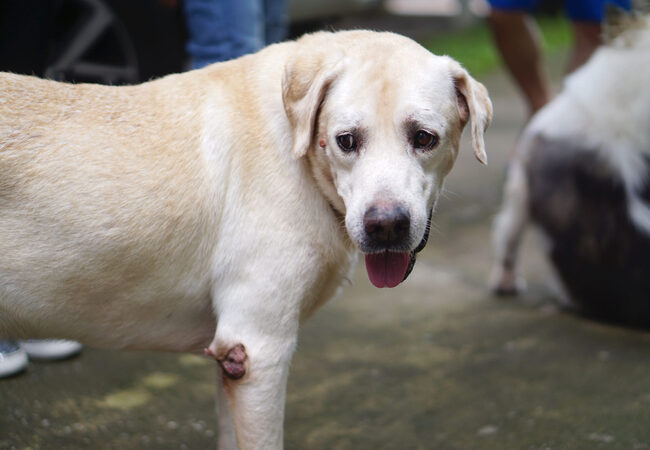Dog Warts in 2025: Expert Vet Guide on Causes, Types & Treatments 🩺🐾

In this article
Dog Warts in 2025: Expert Vet Guide on Causes, Types & Treatments 🩺🐾
By Dr. Duncan Houston BVSc
Hello, I’m Dr Duncan Houston BVSc, a veterinarian and founder of Ask A Vet. In this detailed 2025 article, we'll explore what pet owners need to know about dog warts—also called papillomas—including the difference between viral warts in young dogs and wart-like growths in older dogs. You'll learn about causes, types, diagnosis, treatment, home care, and prevention, with practical support options from Ask A Vet. 🐶💙
1. What Are Dog Warts?
“Warts” are benign skin growths that appear in dogs due to two main causes:
- Viral papillomas: Caused by canine papillomaviruses (CPV‑1 & CPV‑2), forming cauliflower-like bumps in young dogs.
- Sebaceous gland growths: Non-viral, wart-like benign lumps in older dogs—nodular sebaceous hyperplasia or adenomas.
2. Viral vs Non‑Viral Warts
2.1 Viral Papillomas (True Warts)
- CPV‑1: Oral/face papillomas, cauliflower-shaped, harmless, self-limiting; common in puppies and immunosuppressed dogs.
- CPV‑2: Cutaneous papillomas on paws, belly—can be solitary nodules; rarely malignant.
- Transmit through direct contact or shared objects; CPV only affects dogs.
- Incubation ~1–2 months. Warts typically resolve spontaneously within 2–5 months.
2.2 Sebaceous-Wart‑Like Growths
- Common in mature dogs—firm, hairless, pea-sized nodules from sebaceous hyperplasia.
- Generally benign; rarely require removal unless infected or ulcerated.
3. Symptoms & When to Contact Vet
- Small, cauliflower-like bumps in the mouth/lips or on face/feet.
- Bleeding, ulceration, secondary infection—especially oral papillomas.
- Pain or difficulty eating if lesions are large or numerous.
- Persistent wart-like masses >3–5 months may need removal.
- Older dogs with nodular skin lesions that bleed or change appearance should be examined.
4. Diagnosis Process 🔬
- Physical exam: Oral papillomas often visible and characteristic.
- Biopsy/cytology: Needed for atypical lesions or to confirm non-resolving warts.
- Histopathology: Determines whether CPV‑2 lesions are benign or pre-cancerous.
5. Treatment Options 🛠️
5.1 When to Monitor
Most viral warts regress within 2–5 months; older dogs’ sebaceous growths are benign, so “watchful waiting” is often appropriate.
5.2 Active Treatment
- Cryosurgery or surgical excision: For problematic warts—large, numerous, painful, or interfering with eating.
- Topical imiquimod: Used off-label as antiviral; may irritate skin; variable success.
- Immune stimulants: Interferon injection, cimetidine, autogenous vaccine—mixed evidence, occasionally used.
- Antibiotics: Only for bacterial secondary infection of ulcerated papillomas.
- Biopsy and histopathology: For persistent lesions >3–5 months or atypical appearance.
5.3 Home Remedies (Optional)
- Vitamin E topical: Anecdotal benefit in reducing viral papillomas.
- Thuja occidentalis: Evidence is limited; use only under vet guidance.
6. Prognosis & Long-Term Outlook 📊
- Viral papillomas: excellent prognosis; the immune response typically resolves them.
- CPV‑2 lesions: rare malignant transformation—surgical monitoring advised.
- Sebaceous growths: benign; removal optional—monitor for changes.
7. Prevention & Home Care 🏡
- Limit exposure in puppy playgroups until vaccinated and mature.
- Clean toys/bowls to reduce virus exposure.
- Regular grooming to detect early lesions and avoid scratching.
- Support immune health with balanced diet and avoid immunosuppressants unless needed.
8. Tools from Ask A Vet,💡
- Ask A Vet: Telehealth check-ins, lesion evaluation, and treatment planning.
9. When to Call Your Vet 🚨
- Lesions persist or change after 3–5 months
- It's bleeding, ulcerated, infected
- Multiple oral papillomas causing drooling, chewing trouble
- Growths in paws, face, or near eyes
10. Final Thoughts 📝
Dog warts—whether viral or wart-like sebaceous growths—are usually harmless, but early recognition and proper care ensure comfort and avoid complications. Many resolve with no intervention, while those requiring treatment respond well to removal or immune support. With expert guidance from Ask A Vet, you’re supported in keeping your dog healthy, comfortable, and wart-free in 2025. 🐾💙
If you notice any skin growth—especially in younger dogs—schedule a telehealth consult via AskAVet.com. Download our app for lesion tracking, reminders, and expert follow-up care. 🌟






